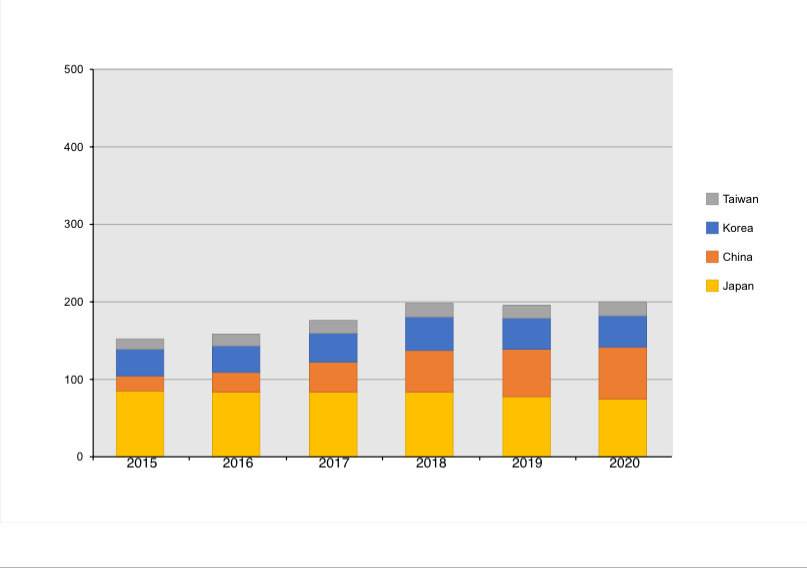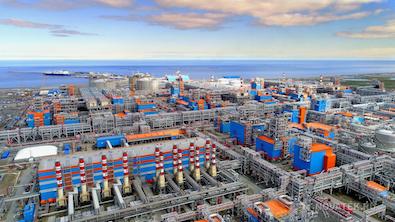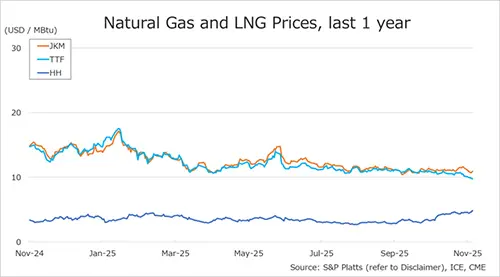
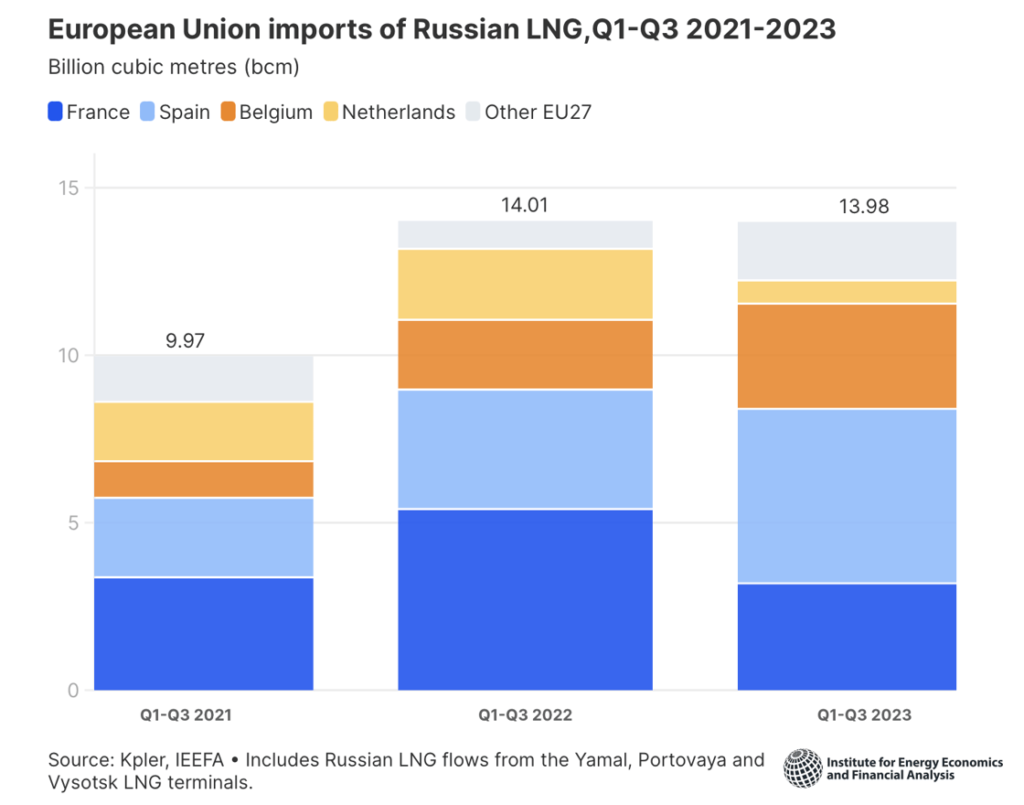
Since Russia’s invasion of Ukraine, the European Union (EU) has aimed to wean itself from Russian gas and liquefied natural gas (LNG). But figures have shown an increase in Russian LNG imports, with some European countries even allowing their terminals to transship and/or re-export Russian LNG.
The transshipped cargoes arriving at LNG terminals in Europe are often not included in official import figures and thus ignored by policymakers.
Spain is the leading importer of Russian LNG among EU countries, with 5.21 billion cubic metres (bcm) imported from January to September 2023, followed by France (3.19 bcm) and Belgium (3.14 bcm).
Although France reduced its imports of Russian LNG from January to September 2023, Spain and Belgium increased theirs by 50% compared to the same period in 2022. The EU imported 18.5 bcm of Russian LNG in 2022 and 13.98 bcm from January to September 2023, according to Kpler.
 The EU terminals that have received the most LNG from Russia’s Yamal project in 2023 are Zeebrugge, Belgium, followed by Montoir-de-Bretagne, France, and Bilbao, Spain.
The EU terminals that have received the most LNG from Russia’s Yamal project in 2023 are Zeebrugge, Belgium, followed by Montoir-de-Bretagne, France, and Bilbao, Spain.
Of the Russian LNG imported into Belgium from January to September 2023, 87% came from the Yamal LNG terminal and the rest from the Vysotsk LNG plant, which also exported LNG to Greece and Turkey.
All of France’s Russian LNG imports between January and September 2023 came from Yamal, with 81% imported at Montoir-de Bretagne and the rest at the Dunkerque terminal.
All imports of Russian LNG into Spain during this same period came from Yamal.
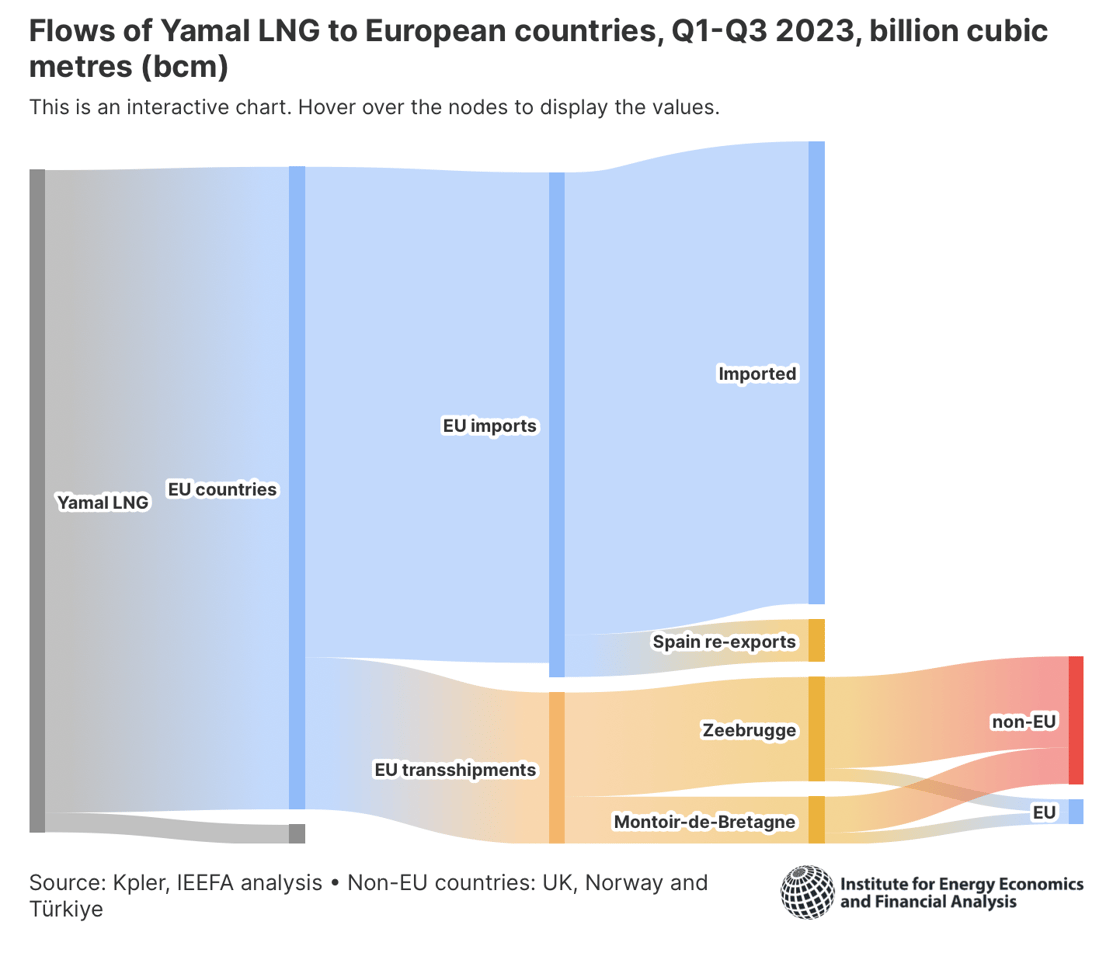 See the full article by Ana Marie Jaller-Makarewicz
See the full article by Ana Marie Jaller-Makarewicz
